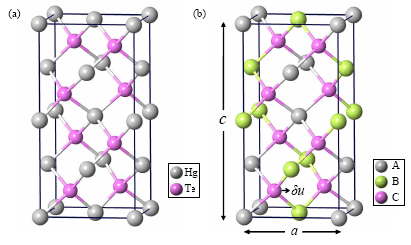The topological insulators with exotic metallic surface states have already become the “star” materials in the fields of condensed matter physics and materials science, and have attracted great attentionof both experimental and theoretical physicists. Many spectacular novel quantum phenomena have been predicted when the surface states of topological insulators are under the influence of magnetism and superconductivity, which have potential technological applications in spintronics and quantum computing. To achieve this goal, material realization of topological insulators with desired physical properties is of crucial importance.
Prof. Yugui Yao and his Ph.D. students from Institute of Physics, Chinese Academy of Sciences, recently made great progress in the prediction and design of topological insulator materials, with the collaboration of Dr. Di Xiao in Oak Ridge National Laboratory. After successfully predicting the Heusler family with proper strain to be topological insulators[Phys. Rev. Lett. 105, 096404 (2010); Phys. Rev. B 82, 235121 (2010)], based on first-principles calculations, here they show that a large number of ternary chalcopyrite compounds of composition I-III-VI
2and II-IV-V
2can realize the topological insulating phase in their native states. The crystal structure of chalcopyrites is derived from the frequently used zinc-blende structure, and many of them possess a close lattice match to important mainstream semiconductors, which is essential for a smooth integration into current semiconductor technology. The diverse optical, electrical and structural properties of chalcopyrite semiconductors,and particularly their ability to host room-temperature ferromagnetism,make them appealing candidates for novel spintronic devices. This work has published on Phys. Rev. Lett. 106, 016402 (2011), and supported by NSF of China and the MOST Project of China.
 |
| FIG. 1: Comparison of the zinc-blende and the chalcopyrite structure.a)The zinc-blende compound HgTe.B)The chalcopyrite compound ABC2. The internal displacement of the anion is defined as δu= (RAC2-RBC2)/a2, where RACand RBCare the bondlengths between the anion C and its two nearest A and B cations. |
 |
| FIG. 2. Inverted band strength for various chalcopyrites as a function of the lattice constant. Open symbols mark the compounds whose lattice constant was reported in the literature. For the rest of the compounds their equilibrium lattice constants are obtained by first-principles total energy minimization. When ΔE<0, squares mark the compounds that are topological insulators and diamonds mark the systems that are topological metals. Shaded areas indicate materials that are expected to be closely (±2%) lattice matched to either GaAs, InAs, or InSb. |



